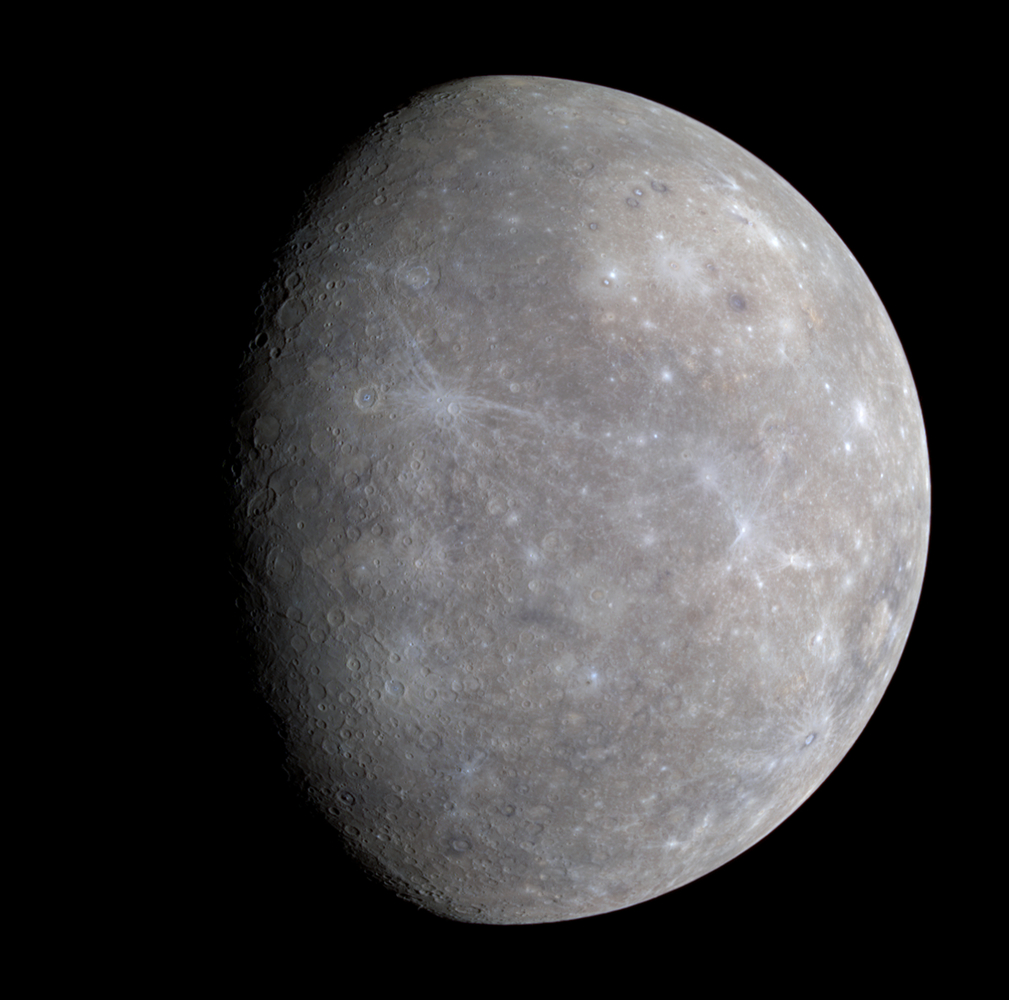The MESSENGER spacecraft completed one Earth year of orbiting Mercury this month, and two papers published in the journal Science highlight some of the surprising scientific results from our solar system's innermost planet.
MESSENGER launched in 2004, and after a few successful flybys went into orbit around Mercury in March 2011. As well as taking images, it has been measuring the magnetic field, taking spectral analysis of the surface and atmosphere, and mapping the terrain, and has made some unexpected discoveries about the planet's surface and core.
 Using the results from laser altimetry to measure topography, it becomes obvious that Mercury's northern hemisphere has a lower dynamic range of elevations, or simply is less mountainous than Mars or the Moon. That's not to say Mercury has had an inactive life - there's plenty of evidence of meteorite bombardment and volcanism, and also that large scale changes have occurred since the last heavy bombardment, and even since the volcanic plains were laid down. Some impact craters have even tilted and distorted. This suggests that volcanic or tectonic activity must have been an as yet poorly understood part of Mercury's evolution.
Using the results from laser altimetry to measure topography, it becomes obvious that Mercury's northern hemisphere has a lower dynamic range of elevations, or simply is less mountainous than Mars or the Moon. That's not to say Mercury has had an inactive life - there's plenty of evidence of meteorite bombardment and volcanism, and also that large scale changes have occurred since the last heavy bombardment, and even since the volcanic plains were laid down. Some impact craters have even tilted and distorted. This suggests that volcanic or tectonic activity must have been an as yet poorly understood part of Mercury's evolution.
Some of the unusual surface features could be accounted for by Mercury's strange core. It takes up 85% of the planet's radius - much larger that we would predict from our understanding of Earth, where the core only accounts for 50%. It contains a vast amount of iron, which generates it's distinctive magnetic field. It also has an unusual structure; while Earth has a solid inner core surrounded by a liquid outer, it seems that Mercury has an extra layer of complication: A solid iron sulphide outer core, surrounding a liquid layer that in turn engulfs a solid inner core.
This core structure is unique among the planets we've been able to observe so far, but fits well with observations of Mercury's magnetic field, and helps to explain the strange chemistry of it's surface - we know that the crust contains far more sulphur than could otherwise be predicted. However, this structure would also restrict convection in the mantle, so is likely to stand in the way of a simple explanation for the surface features.
Mercury may still have some surprises for us - other reports hint at the existence of liquid water, for example - and due to it's success, MESSENGER's programme has been extended to probe even further.
References
- Previous Drugs in sewage
- Next Nanoparticles turn bacteria into superbugs









Comments
Add a comment